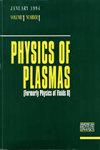反应分子动力学模拟揭示冷大气等离子体与 SARS-CoV-2 中尖峰蛋白融合肽的相互作用机制
IF 2.2
3区 物理与天体物理
Q3 PHYSICS, FLUIDS & PLASMAS
引用次数: 0
摘要
尽管 COVID-19 大流行已经结束,但冷大气等离子体(CAP)杀灭冠状病毒的能力仍然令人印象深刻,对其潜在机制的研究仍在继续。融合肽(FP)是严重急性呼吸系统综合征冠状病毒 2 型(SARS-CoV-2)中 S 蛋白与膜融合并产生毒性的关键部位。本研究通过反应分子动力学模拟研究了 FP 与活性氧(ROS)的相互作用机制。模拟结果表明,给定的 ROS(以 O 原子和 OH 自由基为例)可通过改变重要位点的结构来破坏疏水残基、带负电的酸性残基和肽键。此外,该反应通常从 H-萃取反应开始,然后是各种类型的氧化修饰,如脱氢、羟基化、羰基化、环化、环裂解和脱羧,这与肽的实验结果是一致的。因此,可以预测,FP 的膜融合能力和 SARS-CoV-2 的毒性都会降低,而 CAP 则起到杀菌消毒的作用。此外,还研究了剂量效应,为优化 CAP 提供了实验指导。本研究通过从计算数据中揭示化学途径和最终反应产物,探索了 FP 和 CAP 的相互作用过程,从而从根本上了解了 CAP 灭活 SARS-CoV-2 的机制。本文章由计算机程序翻译,如有差异,请以英文原文为准。
Interaction mechanism of cold atmospheric plasmas and fusion peptides of spike protein in SARS-CoV-2 revealed by reactive molecular dynamics simulation
Despite the conclusion of the COVID-19 pandemic, the coronavirus-killing ability of cold atmospheric plasma (CAP) remains impressive, and investigations into its underlying mechanisms are still ongoing. The fusion peptide (FP) is a crucial site of membrane fusion and toxicity exerted by the S-protein in severe acute respiratory syndrome CoV-2 (SARS-CoV-2). In this study, reactive molecular dynamics simulations were performed to investigate the interaction mechanisms of FP and reactive oxygen species (ROS). The simulation results show that the given ROS (O atoms and OH radicals as examples) can destroy hydrophobic residues, negatively charged acidic residues, and peptide bonds through structurally altering essential sites. Furthermore, the reaction typically initiates from the H-abstraction reaction, followed by various types of oxidative modifications such as dehydrogenation, hydroxylation, carbonylation, cyclogenesis, ring cleavage, and decarboxylation, which are consistent with the experimental findings made on peptides. Therefore, it can be predicted that the membrane fusion ability of FP and the toxicity of SARS-CoV-2 will be reduced, with CAP functioning as a bactericidal disinfectant. The dose effects were also investigated, providing experimental guidance for the optimization of CAP. In this study, the interaction processes of FP and CAP are explored by revealing the chemical pathways and final reaction products from the computational data, thus providing a fundamental understanding of the mechanisms for inactivating SARS-CoV-2 by CAP.
求助全文
通过发布文献求助,成功后即可免费获取论文全文。
去求助
来源期刊

Physics of Plasmas
物理-物理:流体与等离子体
CiteScore
4.10
自引率
22.70%
发文量
653
审稿时长
2.5 months
期刊介绍:
Physics of Plasmas (PoP), published by AIP Publishing in cooperation with the APS Division of Plasma Physics, is committed to the publication of original research in all areas of experimental and theoretical plasma physics. PoP publishes comprehensive and in-depth review manuscripts covering important areas of study and Special Topics highlighting new and cutting-edge developments in plasma physics. Every year a special issue publishes the invited and review papers from the most recent meeting of the APS Division of Plasma Physics. PoP covers a broad range of important research in this dynamic field, including:
-Basic plasma phenomena, waves, instabilities
-Nonlinear phenomena, turbulence, transport
-Magnetically confined plasmas, heating, confinement
-Inertially confined plasmas, high-energy density plasma science, warm dense matter
-Ionospheric, solar-system, and astrophysical plasmas
-Lasers, particle beams, accelerators, radiation generation
-Radiation emission, absorption, and transport
-Low-temperature plasmas, plasma applications, plasma sources, sheaths
-Dusty plasmas
 求助内容:
求助内容: 应助结果提醒方式:
应助结果提醒方式:


